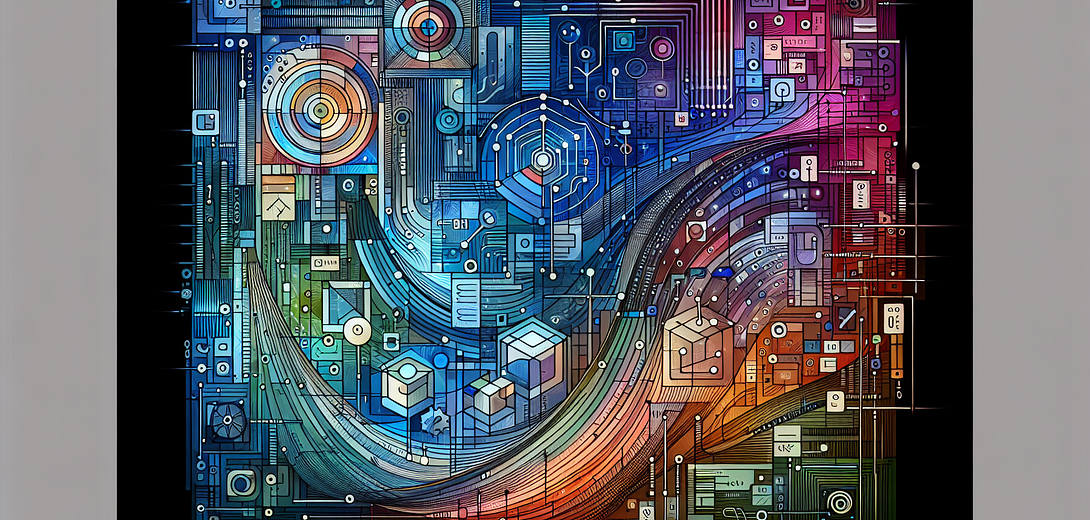Designing User Interfaces Using GPT-Assisted AI Tools
Updated on November 01, 2024

Designing user interfaces (UIs) can be a challenging task, requiring a balance of aesthetics, usability, and functionality. As developers, we are constantly seeking ways to streamline our design process without compromising quality. Enter Cloving CLI, an AI-powered tool that leverages GPT models to enhance productivity and code quality in UI development. In this post, we’ll explore how to use Cloving CLI to design robust user interfaces with the aid of GPT-assisted AI tools.
Getting Started with Cloving CLI
Before diving into UI design, you need to set up Cloving in your development environment.
Installation
Install Cloving globally using npm:
npm install -g cloving@latest
Configuration
Configure Cloving with your preferred AI model and your API key:
cloving config
Follow the interactive prompts to complete your configuration.
Initializing Your Project
To allow Cloving to better understand the context of your project, you must initialize it in your project directory:
cloving init
This command creates a cloving.json file with metadata about your application, helping Cloving understand its unique context.
Generating UI Components
Let’s generate some UI components using Cloving CLI. Suppose we are building a React application and need a standard card component.
Example: Creating a Card Component
Use the cloving generate code command to generate a React card component:
cloving generate code --prompt "Create a reusable React card component for displaying user profiles" --files src/components/Card.tsx
This command analyzes the project context and generates relevant code. The output might be:
// src/components/Card.tsx
import React from 'react';
interface CardProps {
name: string;
email: string;
avatarUrl: string;
}
const Card: React.FC<CardProps> = ({ name, email, avatarUrl }) => {
return (
<div className="card">
<img src={avatarUrl} alt={`${name}'s avatar`} className="card-avatar" />
<h3 className="card-name">{name}</h3>
<p className="card-email">{email}</p>
</div>
);
};
export default Card;
This generated code provides a basic card component that you can easily customize and style for your application’s needs.
Revising Generated UI Components
After generating an initial version of a UI component, Cloving offers tools for revising and refining your design.
- Interactive Revision: Use the
-iflag to revise the component interactively, providing further instructions based on previous context. - Prompt for Changes: Directly in the Cloving CLI chat, prompt changes like:
Revise the card component to include a button for sending a message
Reviewing and Improving Code with Cloving Chat
For complex tasks or ongoing UI designs, leverage Cloving’s chat feature. This allows interactive sessions where you can refine your component, ask questions, or get insights.
cloving chat -f src/components/Card.tsx
In the chat session, ask Cloving to improve or explain the component further. For example:
Add hover effects and improve accessibility features to the card component
Generating Unit Tests for UI Components
Ensure your UI components are reliable by generating unit tests using Cloving:
cloving generate unit-tests -f src/components/Card.tsx
This command generates relevant unit tests focused on ensuring your card component functions as expected, enhancing its reliability.
Best Practices for Using Cloving CLI in UI Design
-
Understand Context: Begin by clearly defining your project context with
cloving initto help Cloving generate more relevant code. -
Iterative Refinement: Use Cloving’s interactive chat and revision features to iterate on complex UI components for improved design outcomes.
-
Integrate Feedback: Actively utilize AI-generated suggestions but always review and adapt them to meet your specific design needs and standards.
-
Code Reviews: Periodically employ
cloving generate reviewto conduct AI-powered reviews that help optimize your codebase. -
Leverage Models: Experiment with different models using
cloving modelsto find the one that best suits your UI design needs.
Conclusion
By integrating Cloving CLI into your UI design process, you can harness the power of AI to create high-quality, aesthetically pleasing, and functional interfaces. Through thoughtful use of Cloving’s commands and features, you’ll not only enhance your productivity but also improve the quality of your user interfaces. Embrace the AI-powered assistance to elevate your design workflow and produce exceptional results effortlessly.
Subscribe to our Newsletter
This is a weekly email newsletter that sends you the latest tutorials posted on Cloving.ai, we won't share your email address with anybody else.